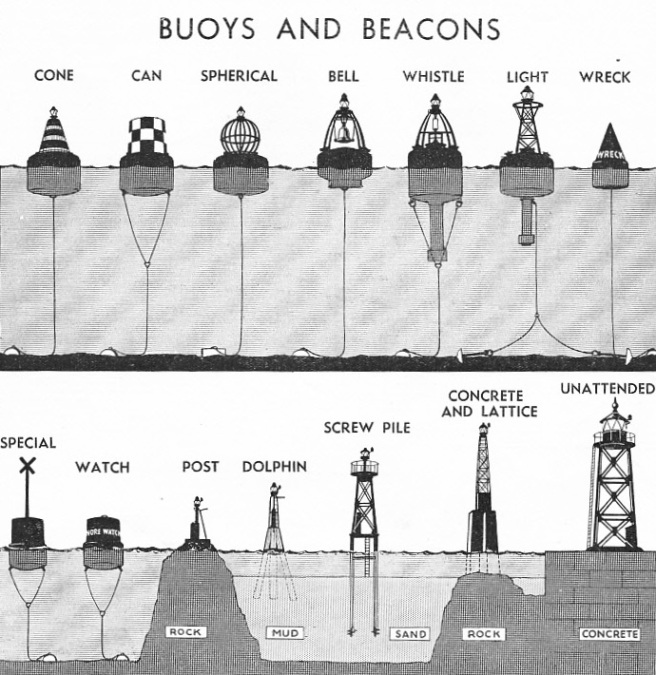

© Shipping Wonders of the World 2012-

Buoys and Beacons

ABOVE are the principal types of buoys and beacons commonly in use in harbours and estuaries.
Their designation, according to physical characteristics, is shown, and the type of mooring used may be observed.
Cone and can buoys are used for delineating channels along which ships approach port. Spherical buoys indicate the ends of “middle grounds”, ie sand-
Can, Cone and spherical buoys may be lighted or unlighted according to requirements, the gas for operating the lantern being in the body of the buoy.
Steel construction is used throughout. Mooring is generally by means of heavy weights as shown, but in certain instances, in exposed positions, mushroom anchors can be employed.
Special buoys are used for a variety of purposes as day signs. Watch buoys are anchored near lightships to verify their position.
Beacons vary in characteristics according to the ground in which they are fixed. Such lights are automatic.
You can read more on “Day and Night Signals at Sea”, “Signalling at Sea” and
“The Work of Trinity House” on this website.